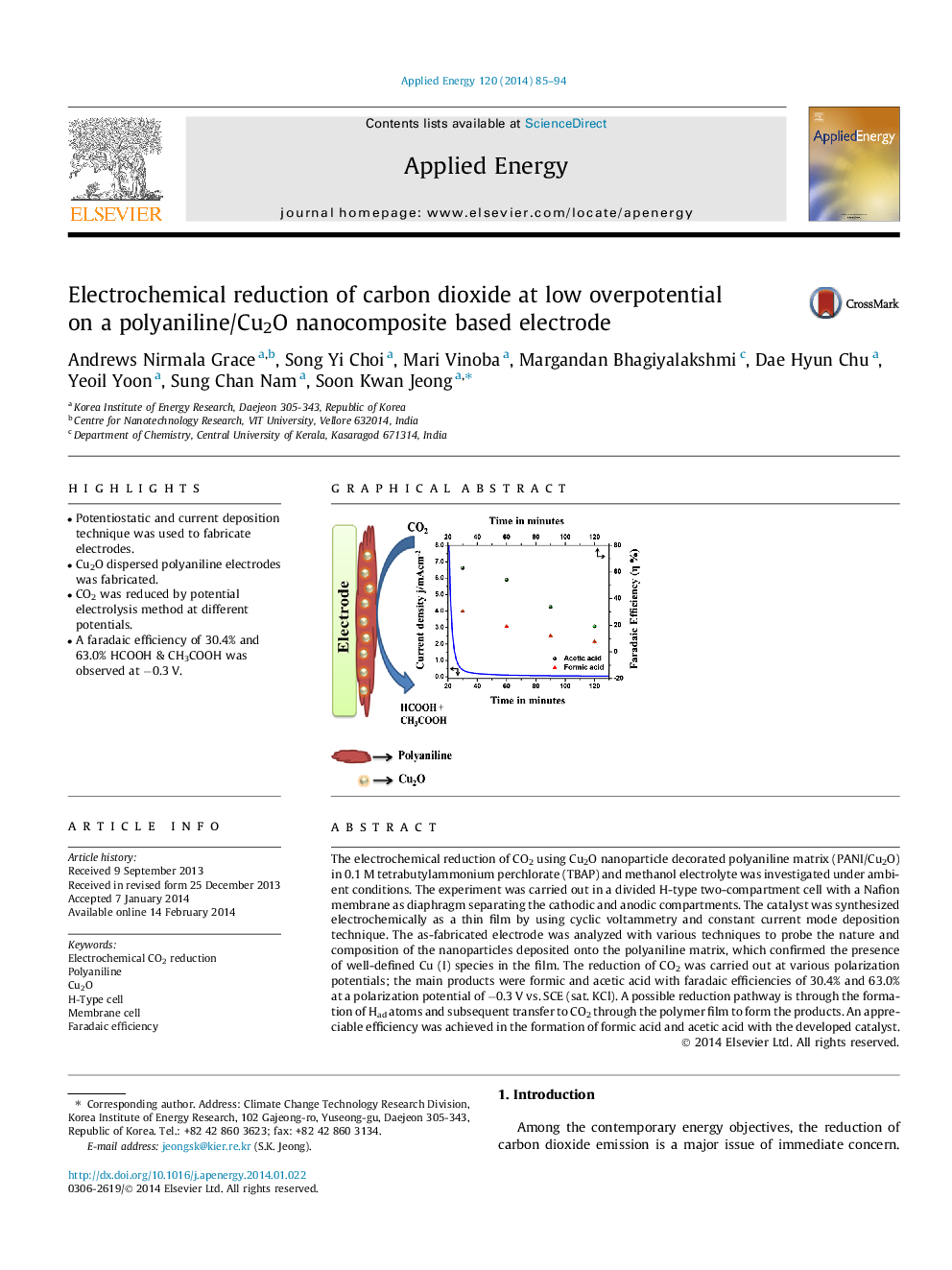| Article ID | Journal | Published Year | Pages | File Type |
|---|---|---|---|---|
| 242768 | Applied Energy | 2014 | 10 Pages |
•Potentiostatic and current deposition technique was used to fabricate electrodes.•Cu2O dispersed polyaniline electrodes was fabricated.•CO2 was reduced by potential electrolysis method at different potentials.•A faradaic efficiency of 30.4% and 63.0% HCOOH & CH3COOH was observed at −0.3 V.
The electrochemical reduction of CO2 using Cu2O nanoparticle decorated polyaniline matrix (PANI/Cu2O) in 0.1 M tetrabutylammonium perchlorate (TBAP) and methanol electrolyte was investigated under ambient conditions. The experiment was carried out in a divided H-type two-compartment cell with a Nafion membrane as diaphragm separating the cathodic and anodic compartments. The catalyst was synthesized electrochemically as a thin film by using cyclic voltammetry and constant current mode deposition technique. The as-fabricated electrode was analyzed with various techniques to probe the nature and composition of the nanoparticles deposited onto the polyaniline matrix, which confirmed the presence of well-defined Cu (I) species in the film. The reduction of CO2 was carried out at various polarization potentials; the main products were formic and acetic acid with faradaic efficiencies of 30.4% and 63.0% at a polarization potential of −0.3 V vs. SCE (sat. KCl). A possible reduction pathway is through the formation of Had atoms and subsequent transfer to CO2 through the polymer film to form the products. An appreciable efficiency was achieved in the formation of formic acid and acetic acid with the developed catalyst.
Graphical abstractFigure optionsDownload full-size imageDownload as PowerPoint slide
